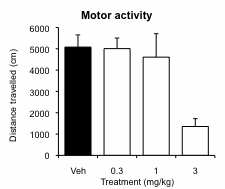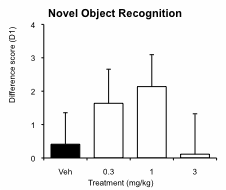Models & Assays
Cognitive Selectivity
The 5-choice serial reaction time task (5-CSRTT) has become a widely used test to measure attentional perfermance in rodents, and having evolved from the continuous performance test in humans, the test has translational value. The basic test design involves training animals to respond to a brief visual stimulus presented unpredictably in one of five locations. One of the strengths of the 5-CSRTT is the ability to manipulate various test conditions to tax animals and provides a means of detecting bidirectional effects on performance within the same experiment.



Donepezil (Aricept®) (0.3-1mg/kg) produced a clear tendency to improve exploration of a novel object relative to a familiar object in a 24h retention test. No such effect was evident at a higher dose of 3mg/kg. In parallel studies, while donepezil doses of 0.3-1mg/kg had minimal effects on locomotor activity and signs reflective of cholinomimetic activity (secretory signs, tremor, hypothermia), the 3mg/kg dose of donepezil produced hypolocomotion and a clear incidence of cholinomimetic signs in 7/8 animals 0-2h post dose, which likely contributed to the decline in novel object recognition test performance.